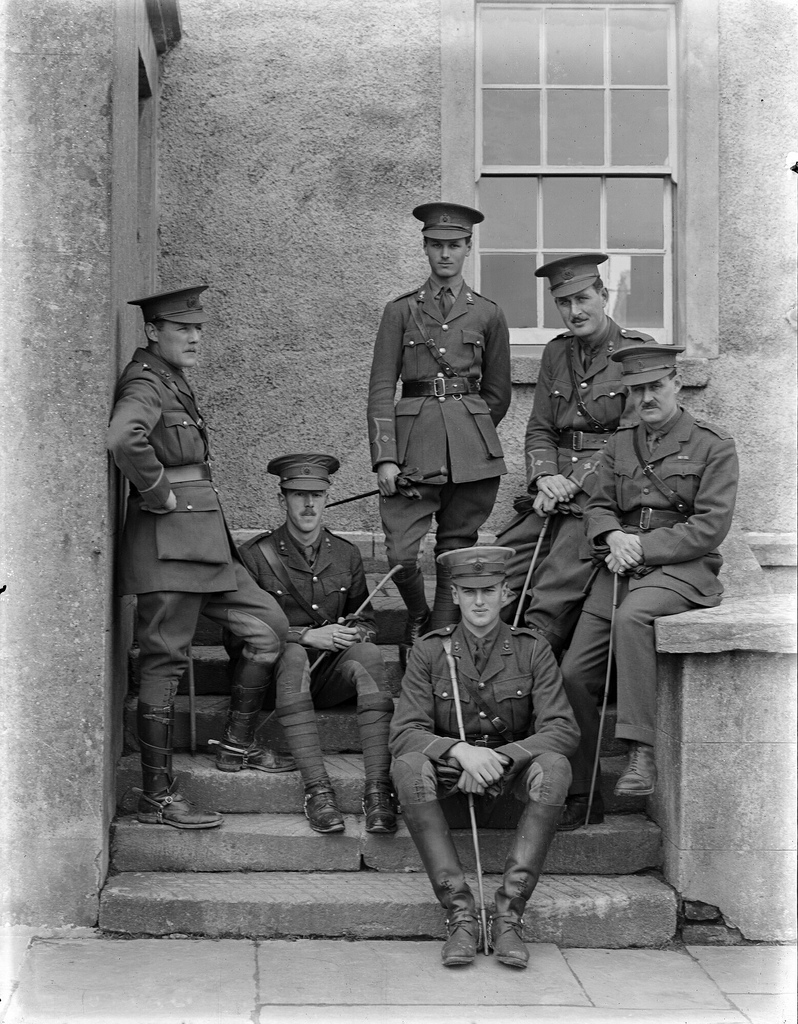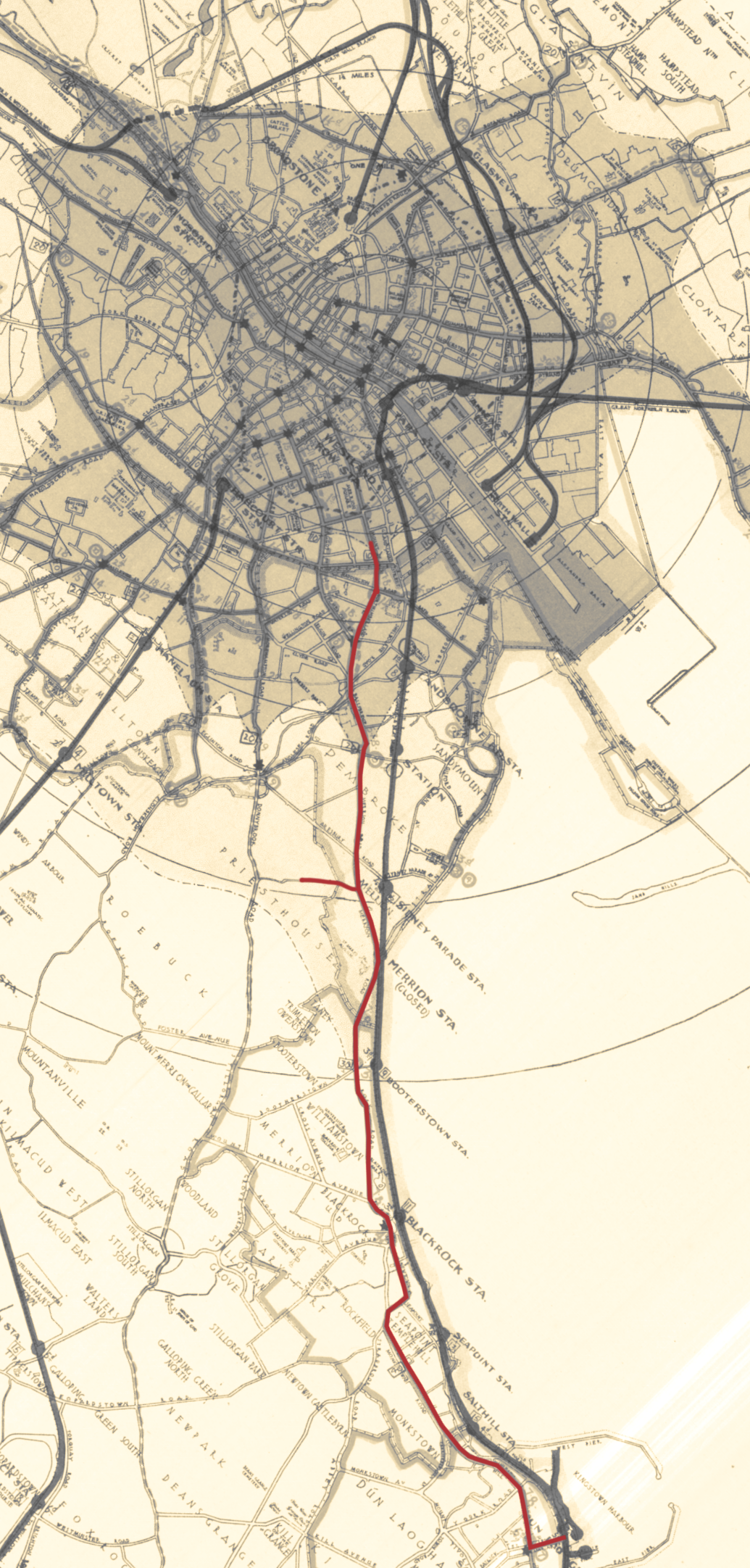
The Arrival
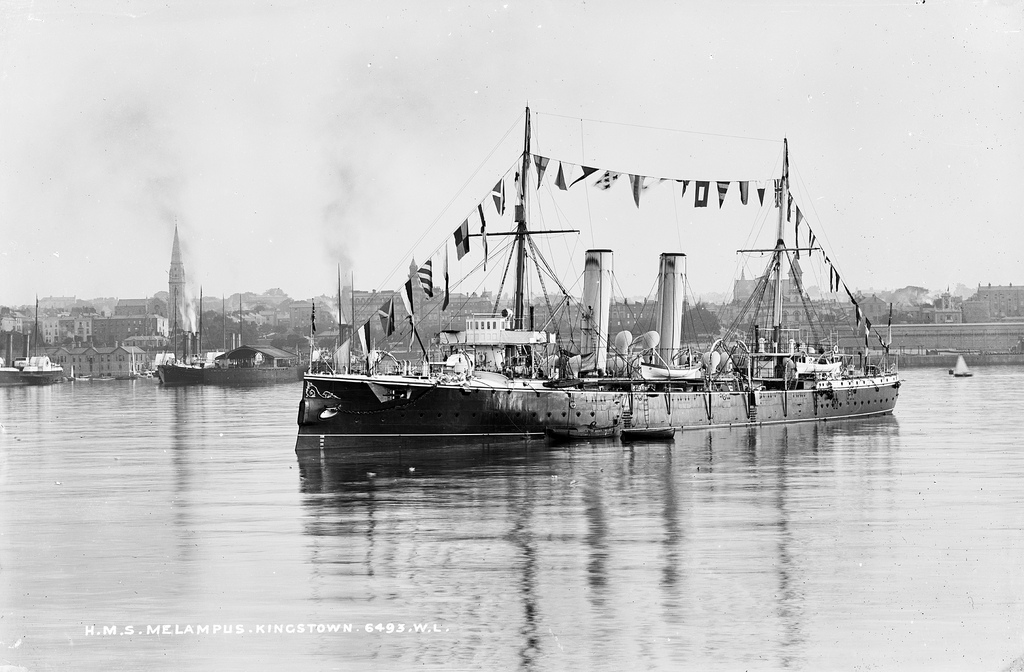
Arriving in from Liverpool the Notts & Derby regiment, commonly known as the Sherwood Foresters, reached Kingstown Harbour in the early hours of Wednesday morning. Many of the regiment's members were barely eighteen; they were young and inexperienced. By Wednesday afternoon they were heavily engaged with the Irish Volunteers.
The Foresters were organised into two columns. Ordered to descend on the city via parallel routes, the right column moved off through the well-to-do suburbs between Kingstown and Dublin.
"On the night of April 24th [...] orders were received to prepare for an immediate move to an unknown destination [...] all that could be learnt was "The train is going to Liverpool." It was learnt on arrival at Kingstown that a Rebellion had broken out in Dublin, that the rebels were holding many of the principal buildings, and that they had established themselves in strong positions with a view to preventing the troops from entering the City."
Elm Park
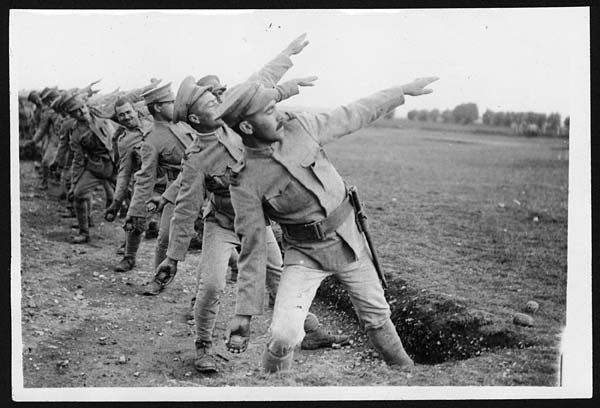
The Sherwood Foresters left most of their support equipment, including Lewis guns and Mills Bombs (grenades), on the dockside in Liverpool. During their march from Kingstown, the Sherwood Foresters passed the Irish Command Grenade School at Elm Park. Colonel Ernest Maconchy sent for the chief instructor of the bombing school, Captain Richard Thorpe Jeffares, who ‘placed their resources at our disposal.’
The Bombing school was the Irish Command Grenade School located in the grounds of Elm Park House, Merrion Road/Nutley Lane, Dublin. Training trenches were dug to teach soldiers the methods of grenade warfare. A British bombing team consisted of about nine men broken down into throwers, carriers, bayonet men and “spare” men.The Designated throwers, or “Bombers”, were instructed to toss the device as one would bowl a cricket ball.
Ballsbridge
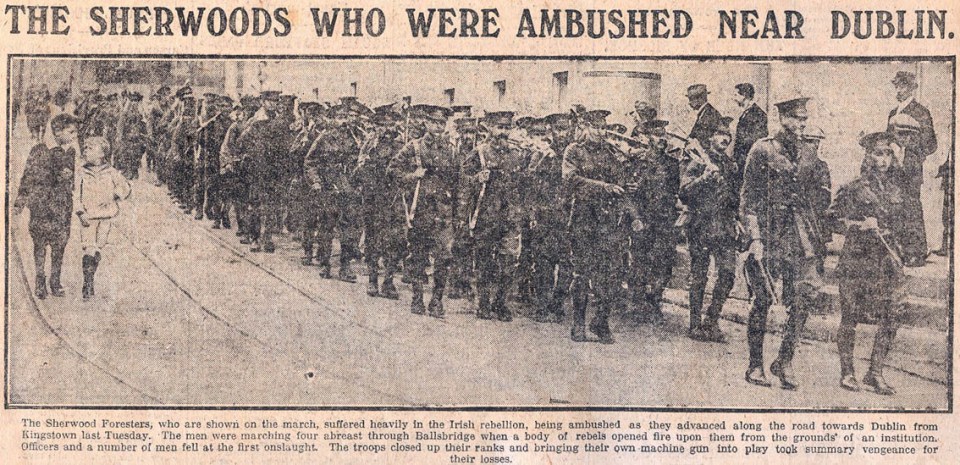
The British troops were welcomed by many of the locals, some of whom provided them with refreshments or, much more crucially, information relating to the rebels movements. "Refreshments were pressed upon the men [...] in addition to much valuable verbal information [...] that many of the rebels were wearing green uniforms, and that Northumberland Road was likely to prove dangerous.
Colonel Ernest Maconchy established his headquarters in the Town Hall at Ballsbridge and used the telephone there to communicate with his superiors at Irish Command.
Royal Dublin Society
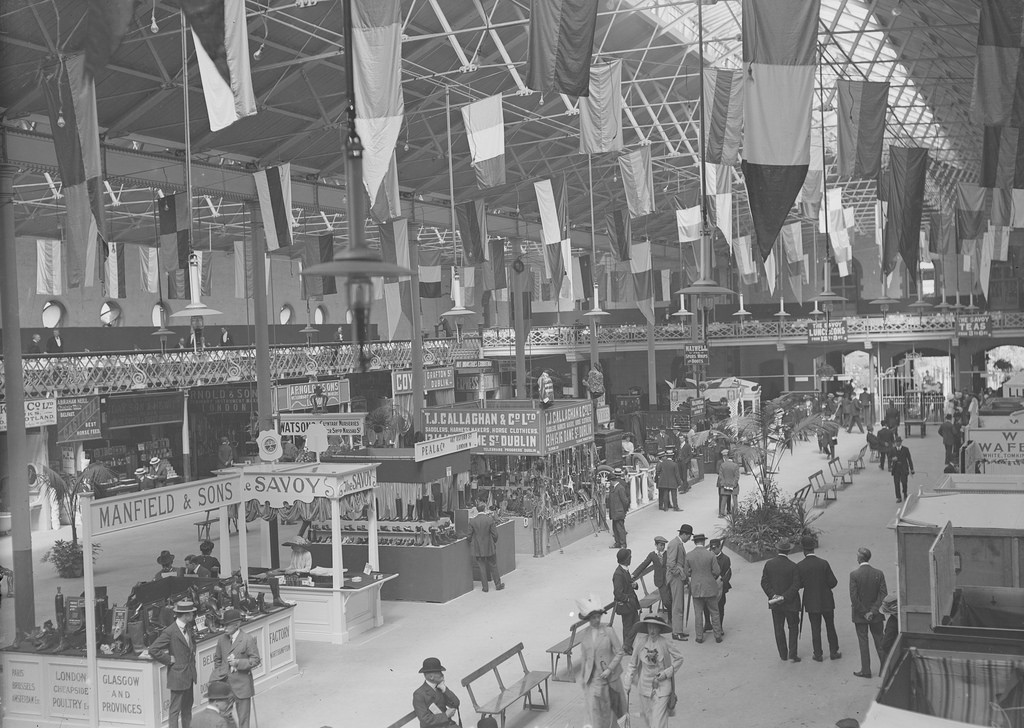
The Spring Show was underway in the Royal Dublin Society (RDS) grounds and continued undisturbed despite the Rising across the city. The Sherwood Foresters were warmly greeted by the upper class crowds in attendance on the day.
Haddington Rd. and Northumberland Rd. Crossing
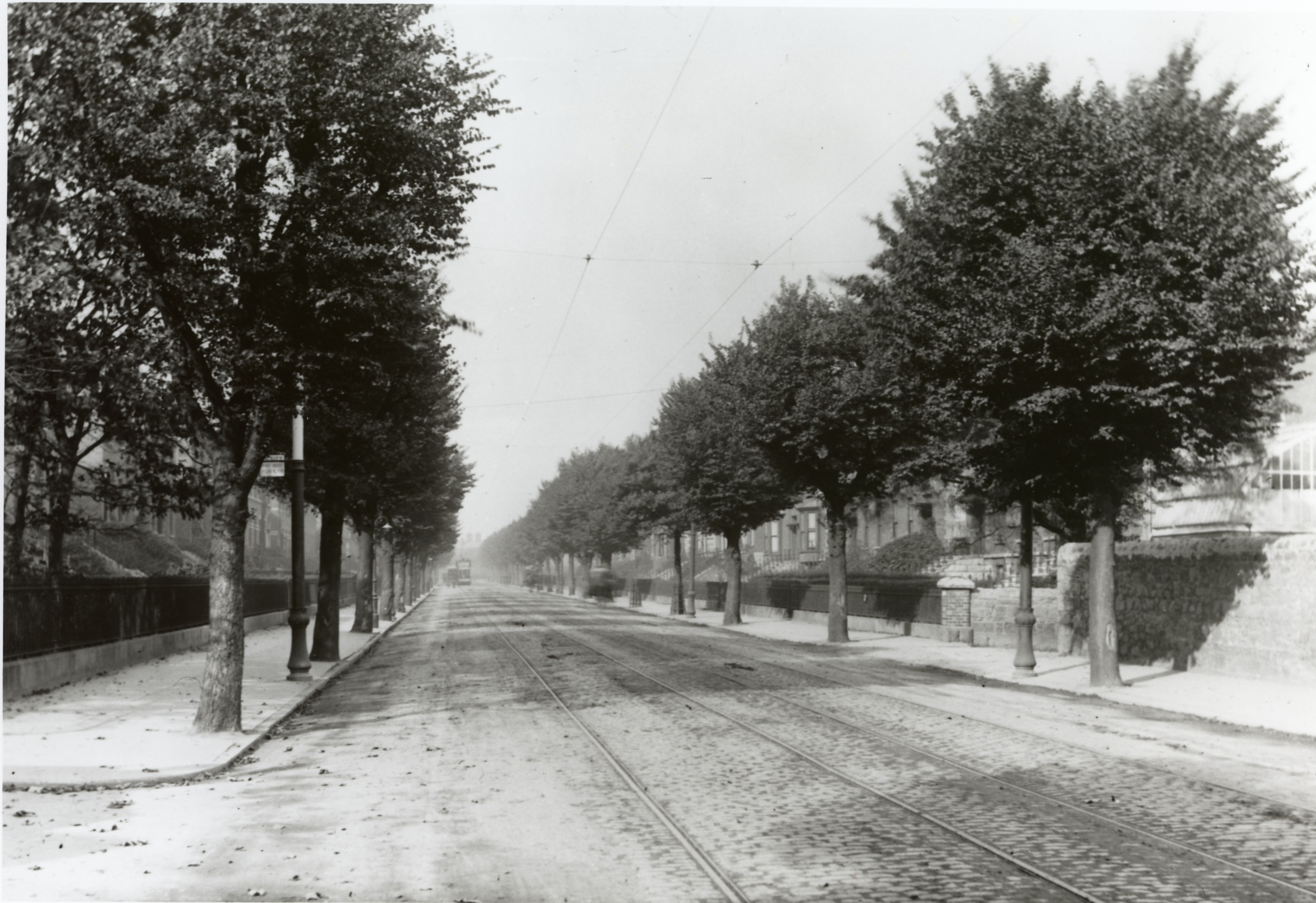
At this point, the leading element of the Sherwood Foresters 2/7th Battalion marched into full view of the Irish Volunteers stationed on Northumberland Road. They march as if on parade, the troops have been warned numerous times about rebel elements along the route, and yet their officers march in plain view at the head of the column with their weapons slung.
Colonel Maconchy maintained that the Sherwood Foresters were not ambushed or surprised. What follows is the bloodiest skirmish of the Easter Rising.


25 Northumberland Road
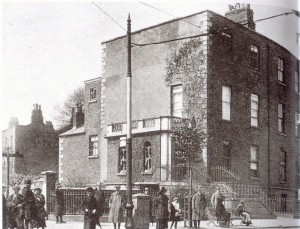
A three-storey, Victorian terraced town-house on the corner of the junction with Haddington Road, 25 Northumberland Road is on the south side of the Grand Canal and a short distance from Mount Street Bridge. It was occupied on Easter Monday by Michael Malone and James Grace. The building was the home of Michael Cussen, described by Grace as “friendly”, who had evacuated his family and servants in advance of the Rising.
On Wednesday morning two members of Cumann na mBan, including one of Grace’s sisters, delivered a dispatch with news of the imminent arrival of British troops marching from Kingstown. Positioned in a third-floor bathroom window, Malone was the first Volunteer to open fire on the advancing Sherwood Foresters with Grace following suit from a window on the second-floor. Their positions offered an ideal field of fire in which to engage British troops moving up Northumberland Road towards the city and along Haddington Road. No. 25 was the first rebel position to fall after it was repeatedly charged by the 2/7th Battalion and members of the Elm Park school armed with hand grenades who blew in the door. Malone was killed by rifle fire but Grace managed to escape.
Parochial Hall

In 1916 St. Stephen’s Parochial Hall, Northumberland Road was a Church of Ireland property used for vestry meetings and other Church events. A two-storey detached building at a recess from the terraces on either side, it was seized by four Volunteers from C Company, 3rd Battalion, Dublin Brigade.
Protected from British attack by the position of their building, the garrison in the hall was forced to wait until British troops came alongside their position before opening fire. Soon after, with their ammunition spent and the attack intensifying, the garrison in the building decided to retreat to Boland’s Bakery, headquarters of the 3rd Battalion under its commandant, Eamon de Valera. Having escaped through the back of the hall and out onto Percy Place, they were fired on and captured by British troops.
St. Stephen’s Schoolhouse

The schoolhouse on Northumberland Road, home of St. Stephen’s Parochial School, was initially occupied by four men from C Company, 3rd Battalion, Dublin Brigade of the Irish Volunteers on Easter Monday. They proceeded to fortify the building by barricading windows and doors. It soon became clear, however, that the position was entirely unsuitable and of no military value. On Tuesday evening a decision was made to evacuate the school and move to Boland’s Bakery, headquarters of the 3rd Battalion under its commandant, Eamon de Valera, to reinforce the garrison there. The building remained unoccupied by rebels for the remainder of the Rising. Believing it to be held by the Volunteers, the Sherwood Foresters initially concentrated efforts on taking the empty schoolhouse, ignoring the garrison of four men positioned in St. Stephen’s Parochial Hall on the other side of Northumberland Road.
Clanwilliam House

A large, three-storey building, Clanwilliam House offered an unobstructed view of the bridge and down Northumberland Road. On Easter Monday, the building was occupied by George Reynolds (section commander), Daniel Byrne, William Ronan and James Doyle, the door having been opened for them by a maid.
On Tuesday morning, Paddy Doyle, Richard Murphy and brothers Thomas and James Walsh were sent from Boland’s Bakery, headquarters of the 3rd Battalion under its commandant, Eamon de Valera, to reinforce the garrison in Clanwilliam House. Daniel Byrne was assigned to carry dispatches leaving seven men in possession of Clanwilliam House on Wednesday morning. By that time, furniture had been used to fortify windows but the glass had not been smashed and no other measures taken to prepare for an assault on the building. Each Volunteer was positioned at one of ten second and third storey windows at the front of the house facing the canal. On hearing fire from 25 Northumberland Road, the garrison opened fire on the advancing Sherwood Foresters. Clanwilliam House was the last of the rebel posts to fall following a concerted rush by troops from the 2/8th and 2/7th Sherwood Foresters during which the house caught fire. George Reynolds, Paddy Doyle and Richard Murphy were killed during the fighting. The building remained unoccupied after the Rising until it collapsed during a storm in 1920.
Robert Builder's Yard

Robert’s builders yard was the premises of W. A. Roberts building contractors and located at the Clanwilliam Place end of Grand Canal Street on the city side of the Grand Canal. Located at the corner of Grand Canal Street and Clanwilliam Place, the yard was next to Sir Patrick Dun’s Hospital where many of the military, rebel and civilians casualties of the Rising were treated.
On Wednesday morning Simon Donnelly, commandant of C Company, ordered Seamus Doyle, Robert Cooper, Seamus Kavanagh and section commander Denis O’Donohue (all of whom had evacuated the schoolhouse on Northumberland Road) to take up positions in the yard. Kavanagh later claimed that Roberts had been occupied since Monday and that the guard was changed each morning. O’Donoghue, Kavanagh and Doyle positioned themselves on the roof of the yard, behind a wall overlooking the canal, while Cooper faced towards Grand Canal Street Bridge. Having fired at the Sherwood Foresters advancing on Mount Street Bridge, and held their position for sometime, an order was delivered calling on the men to retreat to Boland’s Bakery. Denis O’Donoghue claimed that this took place after the fall of Clanwilliam House but Seamus Doyle asserted the order came before Clanwilliam House had caught fire. The men returned to Boland’s over the wall of Patrick Dun’s Hospital and arrived having suffered no casualties.
